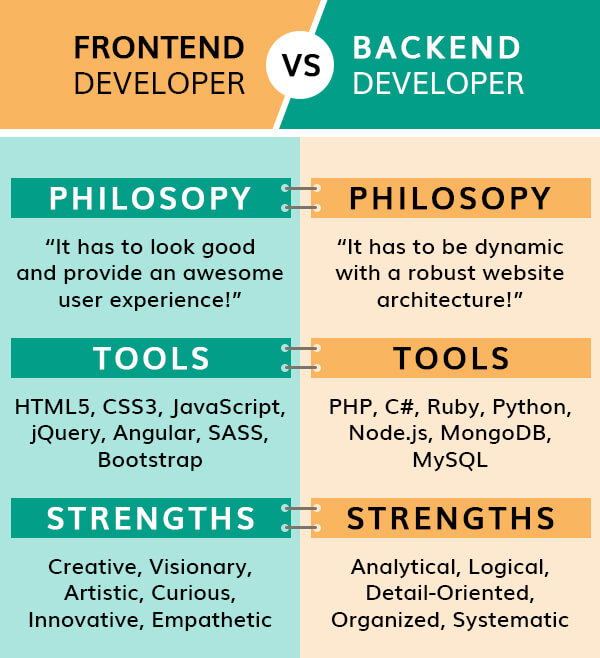How to Build a Robust Backend for Your Mobile App
Developing a mobile app involves more than just building the client. To store and access data, as well as share logic across users, you need a reliable backend. This article provides an overview of important considerations and popular techniques for constructing an effective backend.
Database Choice
The database is where application data is stored. Common options include MySQL, PostgreSQL, MongoDB, and Redis. SQL databases like MySQL and PostgreSQL require structuring data into tables but provide robust query capabilities. NoSQL databases like MongoDB offer more flexibility in data structures at the cost of some consistency. Cache databases like Redis accelerate reads but don’t guarantee persistence. The best database depends on your specific data and access patterns. Evaluate key factors like data structure, query needs, scaling requirements, and familiarity with the technology. Most startups find a SQL or NoSQL database sufficient for their initial needs.

Communication Protocol
Nearly all backends communicate with clients via the ubiquitous HTTP/JSON protocol. Mobile apps send HTTP requests containing JSON payloads, and servers return JSON responses. This standardized approach allows clients in any language to interface with any backend. Focus on understanding HTTP concepts like request methods, status codes, and headers. For JSON, learn how to parse, generate, and validate complex structures. Mastering HTTP/JSON enables backends built with virtually any language or framework to support diverse mobile platforms.
Choosing a Language
The backend programming language determines your framework options and development experience. Popular choices are Node.js, Python, PHP, Java, and C#/.NET. Node.js excels at building lightweight and scalable APIs thanks to its asynchronous model. Python powers full-stack frameworks like Django and Flask. PHP remains widespread for its simplicity and hosting ubiquity. Java/.NET offer enterprise capabilities. Evaluate language ecosystems and your team’s skills before deciding. All are capable of powering robust backends. Consider factors beyond technical preferences alone such as community support and deployment environments.
Framework Selection
Once your language is chosen, select an appropriate framework. Common options align with languages: Express (Node.js), Django/Flask (Python), Laravel (PHP), Spring (Java), and ASP.NET (C#). Frameworks provide a standard way to structure projects, implement routing, and connect components. They handle common tasks so developers can focus on app logic. More full-stack frameworks also include templates, authorization tools, and even front-end components. Lighter frameworks give more flexibility while heavier ones integrate more capabilities out of the box. For scalability, leverage frameworks designed for asynchronous and non-blocking architectures. Popular options like Express, Django, and Laravel support diverse deployment environments as well.
App Architecture
Designing a robust and maintainable application architecture is crucial for production backends. Key considerations include scalability, availability, performance, security, and evolvability over time. Popular architectures separate concerns into logical layers. A data access layer abstracts the database. A business logic layer encapsulates core processes. A presentation layer handles requests and responses. Develop light controllers that delegate tasks to specialized services. Adopt design patterns like model-view-controller for clear separation of concerns. Leverage dependency injection to decouple components. Consider using an object-relational mapper like SQLAlchemy or Mongoose to simplify data access. For resilience, make layers stateless and scalable independently. Techniques like caching, async programming, bulk operations, and middleware help optimize performance. Authentication and authorization ensure only authorized clients can access restricted endpoints.
Deployment and Operations
To run a backend in production, consider how it will be deployed and maintained at scale. Key decisions include hosting methods, auto-scaling, continuous delivery, monitoring, and emergency response. Popular hosting options are on virtual private servers (VPS), container platforms like Docker, and cloud computing services. For scale and availability, leverage abilities to run apps across multiple redundant instances and data centers. Implement continuous integration (CI) and continuous deployment (CD) pipelines to safely rollout code changes. Set up monitoring via tools like New Relic, DataDog or Prometheus to spot issues. Configure alerts to notify about degradations, outages and security events. Develop comprehensive documentation about architecture, APIs, deployment procedures, debugging, scaling patterns, and incident response guidelines. Periodically review and update documentation as the system evolves over time.
Client Communication
Mobile clients interface with backends via simple but powerful RESTful APIs. Design APIs around resources like users, posts, comments etc. Adopt design principles of being discoverable, self-documenting, following uniform patterns, and minimizing latency. Reinforce APIs with rate limiting to block abusive clients. Support common features like pagination, filtering, sorting for query flexibility. Return error messages that clients can display to users. Consider progressively enhancing APIs over time rather than breaking changes. Leverage HTTP features appropriately. GET for querying resource collections, POST for creation, PUT/PATCH for updates, DELETE for removal. Use HTTP status codes to indicate operation result and errors. Employ authentication schemes like OAuth to authorize requests securely. Cache API responses judiciously on the backend for better performance.
Testing and Quality Assurance
Rigorous testing is essential to deliver robust, high-quality backends. Unit test individual components thoroughly with a framework like Mocha or Jest. Perform integration testing of how pieces work together. Develop a full end-to-end test suite to validate APIs meet specifications. Consider test-driven development (TDD) to define requirements first before coding. Automate testing pipelines with tools like Jest, PyTest, or Gradle. Set up continuous integration to run tests on every code change. Track code coverage to measure test effectiveness over time. Implement API testing tools like Postman to validate APIs against Swagger/OpenAPI definitions. Automate API testing using a library like SuperTest. Load test backends to benchmark capacity and uncover bottlenecks. Simulate failures to validate error handling and resilience. Monitor apps with APM tools like New Relic to proactively detect performance regressions.
Conclusion
While techniques continue to evolve rapidly, careful consideration of fundamentals like data storage, server programming, API design, security, scalability, testing and operations delivers a robust backend for any mobile application. Focus on modularity, separation of concerns, extensibility and documentation for projects that stand the test of time.
